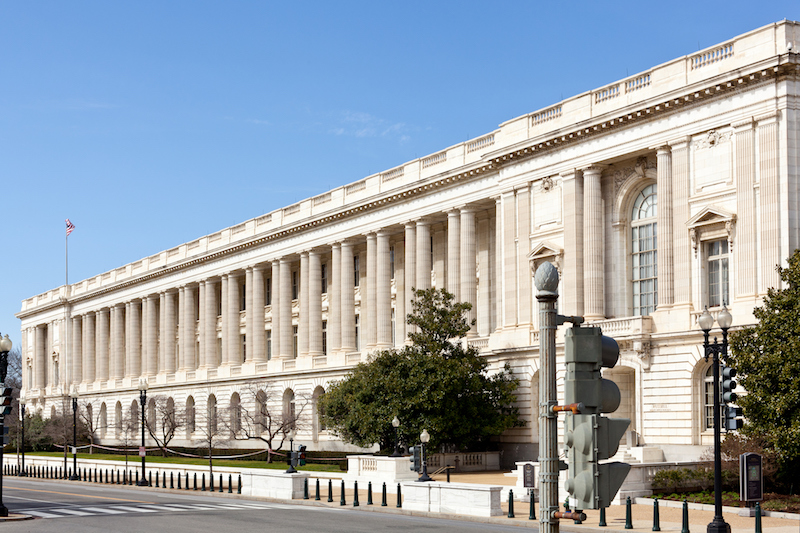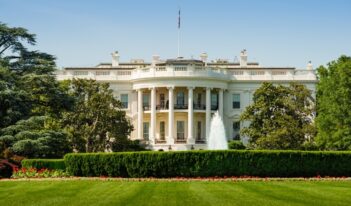
Improving regulatory performance is vital for making Americans better off.
Why should government intervene in the economy? The fundamental economic justification is that markets occasionally fail. The government can intervene in those markets in ways to make them work better and make us—the whole of society—better off. This is the ideal that has helped motivate U.S. regulatory policy from the Reagan Administration through the Obama Administration.
So, how can we promote a regulatory program that makes the lives of the American people better? Simply the existence of market failures is not sufficient to justify government intervention. The prospect of government failure can result in outcomes where the government does not deliver on this ideal. Real-world context makes clear the importance of evaluating the performance of regulations. Retrospective review and regulatory lookbacks can serve as a barometer to measure progress toward that ideal of making the American people better off.
Policymakers can pursue three actions to improve regulatory performance.
First, we should undertake rigorous analysis of our regulations to serve as the foundation for any discussion of whether a regulation is good or bad for our country. We should know how much our society spends to achieve a goal, whether we achieve the goal, and what the societal returns are of progressing toward the goal. We should also understand the distribution of the benefits and costs of these interventions. And all of these efforts should reflect rigorous, robust, and replicable evidence.
To be in a position to conduct such analysis, regulators will need to plan for this work. The design of the rules should incorporate such planning—both to collect the necessary data for analysis and to ensure that implementation of the rule is amenable to rigorous statistical evaluation.
A regulator, for example, could leverage the discretion in their authority or the wrinkles in statutes to implement rules that establish the applicability of a policy by the date a facility came into operation, the size of firms, the season, or the geographic location. The economics literature provides numerous examples of how scholars, on an ad hoc basis, have exploited the design of a regulation in order to estimate the causal impact of the rule on—as opposed to just its correlation to—important outcomes.
Second, we need to be creative about the set of tools policymakers can deploy to mitigate failures in the market economy. Taxes, subsidies, and public spending could either substitute for or complement regulations. It is not uncommon for the government to promulgate a regulation, and then change the tax code in a way that has a material impact on that regulation.
Consider two prominent policy examples. In 2015, the Obama Administration promulgated the Clean Power Plan to lower power sector carbon dioxide emissions 32 percent below their 2005 levels by 2030, as well as a tax bill that extended tax credits subsidizing wind and solar power. Subsidizing renewable power would lower the costs of complying with the Clean Power Plan—shifting regulatory compliance costs to the taxpayer—and highlight the opportunities of these tools to substitute for one another.
Since 2010, health insurance markets under the Patient Protection and Affordable Care Act have reflected an interplay of regulations, such as “essential health benefits,” subsidies to individuals and insurance companies, and tax penalties for failure to sign up for insurance. The combination of these regulatory and tax instruments work to mitigate the potential for adverse selection to undermine health insurance markets.
As we assess the performance of regulations, we may realize that there could be a smarter non-regulatory way to deliver on a regulation’s goals. For example, a carbon tax could be a more effective way to reduce carbon dioxide emissions than Clean Air Act regulations. But there would be challenges to overcome. The U.S. Environmental Protection Agency has little incentive to evaluate a carbon tax as an alternative to its own statutory authority.
Moreover, tax instruments undergo virtually no meaningful economic analysis—except for revenue impacts and, occasionally, distributional impacts. If we subject regulatory instruments to rigorous evaluation, we should also do so for tax and spending alternatives.
Third, we need to develop rigorous methods for estimating the cumulative costs of regulations and to identify ways of reducing these costs without foregoing their social benefits. The U.S. government’s prospective review of regulations typically occurs on a rule-by-rule basis, and it thus ignores cumulative costs by design. Moreover, recent regulatory lookbacks, such as in the Obama Administration, took a rule-by-rule approach to ex post review. While President Obama called on agencies to consider the cumulative impact of their regulations, very few did.
The accumulation of regulatory costs could impose significant economic costs. The tax-interaction literature in public finance highlights how social welfare losses from distortionary taxes increase with the layering over of additional taxes, and the same concepts apply in the regulatory context. The cost of any individual rule may be modest, but adding up all regulatory costs could result in adverse interactions. Moreover, multiple, overlapping regulations could undermine cost-effectiveness, deter entrepreneurship, and weaken innovation incentives.
There are, however, two major challenges to critically taking on cumulative costs.
First, it is analytically difficult to assess the cumulative impact of our regulations. There are emerging opportunities with the availability of both big data and the statistical tools to evaluate these data. This is a challenge for the academic community to advance the research frontier so that rigorous tools could be applied to this policy question. We also need to think through the institutional design. No agency has the incentive to assess the effects of not just its own regulations, but also those of other agencies. Regulatory budgeting and “one-in-two-out” policies, as implemented by the Trump Administration, do not address in any meaningful way this challenge of accounting for the costs of regulations issued by other agencies. In addition, these approaches undermine the ideal of regulation—to make society better off—by ignoring the benefits of regulations.
Designing and executing regulatory policy in the future, such that we can evaluate the performance of regulations, identify the most effective implementation tools, and mitigate the cumulative costs, can ensure that we continue to make progress toward the ideal of improving the lives of Americans through regulation.
This essay is part of an eight-part series, entitled New Developments in Regulatory Benefit-Cost Analysis.




